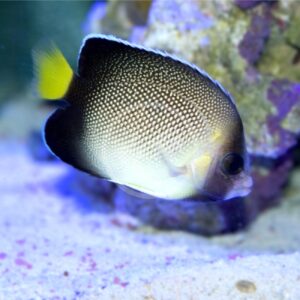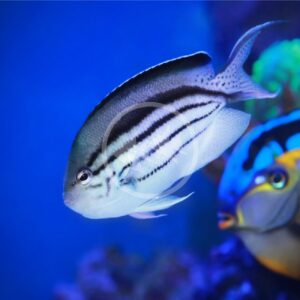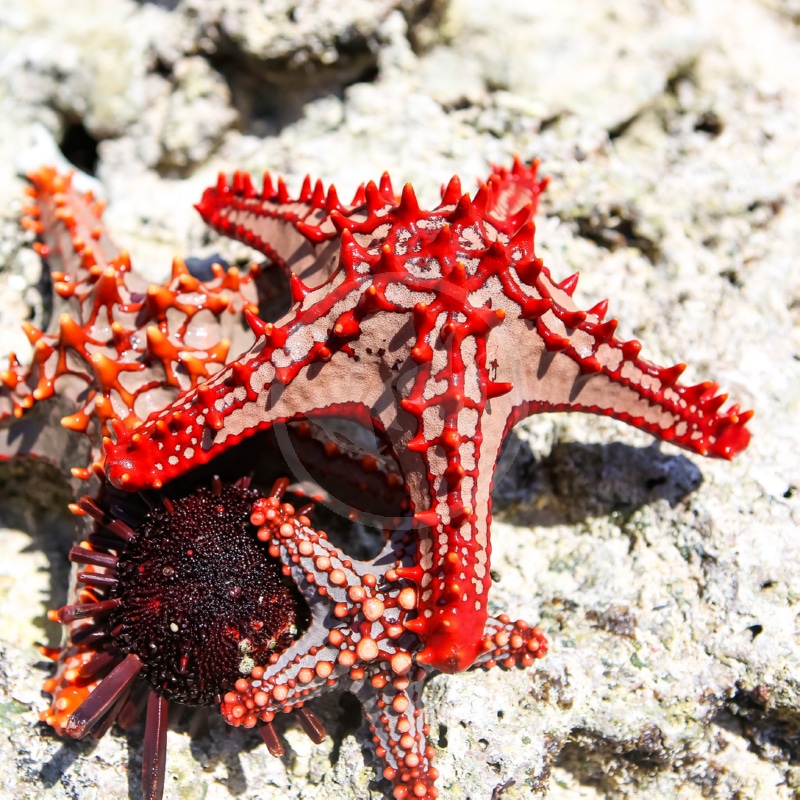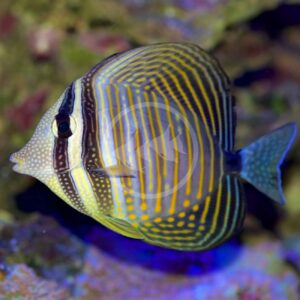STARFISH – RED KNOB Protoreaster linckii
$49.99
The Red Knob Starfish, also known as the Red Knobby Starfish and African Starfish, may be one of the most striking starfish surely to make a statement in a FOWLR (fish only with live rock) aquarium. Originating from shallow and deep waters of the Indian Ocean, the Red knob starfish can reach a size of 12″ across and sports an overall thick, gray body with many red protrusions connected by red lines that give it a grid-like appearance. Similar to the care of the Chocolate chip starfish (Protoreaster nodosus), the Red knob starfish is a relatively hardy species with easy dietary requirements to fulfill.
Out of stock
Care Level: Easy
Temperament: Peaceful
Reef Compatible: No
General Description: The Red Knob Starfish, also known as the Red Knobby Starfish and African Starfish, may be one of the most striking starfish surely to make a statement in a FOWLR (fish only with live rock) aquarium. Originating from shallow and deep waters of the Indian Ocean, the Red knob starfish can reach a size of 12″ across and sports an overall thick, gray body with many red protrusions connected by red lines that give it a grid-like appearance. Similar to the care of the Chocolate chip starfish (Protoreaster nodosus), the Red knob starfish is a relatively hardy species with easy dietary requirements to fulfill.
Diet Requirements: Red knob starfish are carnivores. Directly offer it pieces of shrimp, clam, squid or other meaty foods at least once a week.
Tank Requirements: An established, minimum aquarium size of 75 gallons is recommended to house an adult Red knob starfish. Maintaining stable water parameters is a very important component to the success of keeping this invertebrate; they are intolerable of high nitrates. Red knob starfish can be sensitive to temperature, pH, and salinity changes. Generous live rock will mimic the natural environment of the Red knob starfish and give it ample places to forage. Do not house Red knob starfish with fish that can harm it, such as pufferfish and certain triggerfish species. Red knob starfish are not reef safe because they will consume soft corals, large polyp stony corals, sponges, tubeworms, clams and other starfish as an adult; small specimens may only consume algae, but adding one to a reef even at this size is with caution at best. It is absolutely necessary to take time acclimating a Red knob starfish; we suggest via drip acclimation. Recommended water conditions: 76-78° F, dKH 8-12, pH 8.1-8.4, salinity 1.024-1.026. Limit air exposure of Red knob starfish when handling.
Purchase Size: Small: 2″ to 4″; Medium: 4″ to 6″; Large: 6″ to 8″
Note: Your item may not look identical to the image provided due to variation within species. Purchase size is approximate.
Dry goods orders are shipped via US Postal Service or UPS to the address provided at checkout based on the selection made in your website shopping cart. Product is carefully packed to help prevent any damage during shipping. Once processed you will receive a shipment notification via email with tracking number, and delivery notification. Please allow 48 hours for processing after your order is placed.
Perishable items (i.e. live plants, refrigerated/frozen foods) are shipped via US Postal Service 2-3 day to the address provided at checkout for a $25.00 flat rate charge. Items are packed with secure packing material and heat, cold, or Cryo packs as needed to maintain safe temperatures during transit. If one or more perishable items are in the shopping cart at checkout the $25.00 perishable shipping charge will automatically appear and need to be selected. Once processed you will receive a shipment notification via email with tracking number. Please allow 48 hours for processing after your order is placed.
Livestock (i.e. fish, invertebrates, coral) are shipped via UPS Overnight to the address provided at checkout for a $55.00 flat rate charge. Livestock is packed in insulated styrofoam boxes with secure packing material and heat, cold, or Cryo packs as needed to maintain safe temperatures during transit. If one or more livestock items are in the shopping cart at checkout the $55.00 livestock shipping charge will automatically appear and need to be selected. Livestock is shipped Monday through Wednesday ONLY (no weekend delivery is available) weather permitting, and we reserve the right to delay shipping until conditions are appropriate for safe arrival. Once your order is placed we will contact you to arrange the best shipping date based on these criteria. Someone must be available to receive the livestock order on the first delivery attempt. Once processed you will receive a shipment notification via email with tracking number. Please allow 48 hours for processing after your order is placed.
For mixed dry goods/perishable & livestock orders items will be shipped via their corresponding shipping methods outlined above. Dry goods will be shipped via US Postal Service or UPS based on your selection and checkout, while livestock will ship via UPS Overnight for a $55.00 flat rate charge. You will receive separate notifications and tracking numbers for the dry goods and livestock. Please note due to different carriers and shipping methods dry goods and livestock may arrive on different days.
Related products

CICHLID – RAM GERMAN GOLD
Mikrogeophagus ramirezi
$5.99 – $16.99


ANGEL – YELLOWTAIL CREAM Apolemichthys xanthurus
$129.99 – $179.99

WRASSE – LEOPARD VERMICULATE Macropharyngodon bipartitus
$129.99TANG – SAILFIN DESJARDINII Zebrasoma desjardinii
$169.99 – $199.99TRIGGER – HUMU HUMU Rhinecanthus aculeatus
$89.99 – $139.99

RABBITFISH – TWO BARRED Siganus virgatus
$89.99 – $199.99

ANGEL – LAMARCK Genicanthus lamarck
$99.99 – $299.99





